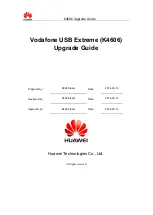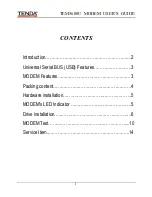
DMD2401/DMD2401L/DMD2401 IBS/IDR Satellite Modem
User Interfaces
TM065 - Rev. 3.3
4-37
Table 4-4. Checksum Calculation Example
Byte Field
Data Content
Running Checksum
<BYTE COUNT>
02h = 00000010b
00000010b
<SOURCEID>
F0h = 11110000b
11110010b
<DESTINATION ID>
2Ah = 00101010b
00011100b
<FSN>
09h = 00001001b
00100101b
<OPCODE>
03h = 00000011b
00101000b
<DATA> (Byte 1)
DFh = 11011111b
00000111b
<DATA> (Byte 2)
FEh = 11111110b
00000101b
Thus, the checksum is 00000101b; which is 05h or 5 decimal. Alternative methods of
calculating the checksum for the same message frame are:
0002h + F0h + 2Ah + 09h + 0003h + DFh + FEh = 305h.
Since the only concern is the modulo 256 (modulo 1 00h) equivalent (values that can be
represented by a single 8-bit byte), the checksum is 05h.
For a decimal checksum calculation, the equivalent values for each information field are:
2 + 240 + 42 + 9 + 3 + 223 + 254 = 773;
773/256 = 3 with a remainder of 5.
This remainder is the checksum for the frame.
5 (decimal) = 05h = 0101b = <CHECKSUM>
4.4.3 Frame Description and Bus Handshaking
In a Monitor and Control environment, every message frame on a control bus port executes as a
packet in a loop beginning with a wait-for-SYN-character mode. The remaining message format
header information is then loaded, either by the M&C computer or by a subordinate piece of
equipment (such as the DMD2401) requesting access to the bus. Data is processed in
accordance with the OPCODE, and the checksum for the frame is calculated. If the anticipated
checksum does not match then a checksum error response is returned to the message frame
originator. The entire message frame is discarded and the wait-for-SYN mode goes back into
effect. If the OPCODE resides within a command message, it defines the class of action that
denotes an instruction that is specific to the device type, and is a prefix to the DATA field if data is
required. If the OPCODE resides within a query message packet, then it defines the query code,
and can serve as a prefix to query code DATA.
The Frame Sequence Number (FSN) is included in every message packet, and increments
sequentially. When the M&C computer or bus-linked equipment initiates a message, it assigns
the FSN as a tag for error control and handshaking. A different FSN is produced for each new
message from the FSN originator to a specific device on the control bus. If a command packet is
sent and not received at its intended destination, then an appropriate response message is not
received by the packet originator. The original command packet is then re-transmitted with the
same FSN. If the repeated message is received correctly at this point, it is considered a new
message and is executed and acknowledged as such.
Summary of Contents for ComStream DMD2401
Page 2: ......
Page 15: ......
Page 60: ...DMD2401 DMD2401L DMD2401 IBS IDR Satellite Modem User Interfaces TM065 Rev 3 3 4 21...
















































